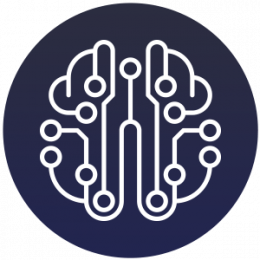
These days, marketers toss around “Predictive” and “Prescriptive” analytics phrases like confetti. Half of them seem to think that saying “tomorrow will be another day that ends with a Y” is revolutionary. I guess they’re better than the ones who think the reports they’ve done for 40 years THAT ARE STILL PRINTED ON GREENBAR are revolutionary, but I digress….
What are the four main types of marketing analytics and what should you know about them?
Descriptive Analytics tell you what happened.
They look at the past (historical data) and simple calculations to explain what happened. Did sales increase this year versus last year? Did you gain more inquiries this quarter than last quarter? Both questions are easy to answer by looking at the past and figuring out specific patterns within the data.
First, the data is collected and prepared, and then it’s measured. Typically, Descriptive Analytics are human-powered. Yes, the computer helps compile the historical data, but humans primarily do the interpreting & analyzing of the information.
Descriptive Analytics are the type of analytics that have been around forever. You see them in charts, reports, bar graphs, tables, dashboards, cave drawings, and so on. These days, Descriptive Analytics is/are a starting point used to prepare for further analysis.
Diagnostic Analytics look at WHY something happened.
Diagnostic Analytics are a more advanced version of Descriptive Analytics. They take the data you have and add additional insights. So, instead of saying, “our abandoned cart rate decreased 3 points this month from last month,” it takes it a step further and says: “our abandoned cart rate decreased 3 points month-over-month and our direct traffic conversion went from 6% to 12% which contributed to most of the increase.” (Incidentally, Diagnostic Analysis is often referred to as Root Cause Analysis.)
Predictive Analytics tell you WHAT IS LIKELY to happen.
Predictive Analytics uses data mining, modeling, and machine learning to forecast possible outcomes and the likelihood of those outcomes.
It focuses on predicting and understanding what could happen in the future. More important, it shows you what actions impact/affect those outcomes. You’re in charge here, too but the grunt work has been done by The Machine, leaving you to more critical tasks like strategy and decision-making. So, if you want to grow faster than Jack’s beanstalk, The Machine will show you the best way to achieve that. If you need to run in place for a hot minute to let Operations catch up or do something to avert risk, it can also figure out the most efficient way to do that.
Predictive Analytics uses whatever data you feed it – your data, competitors’ data, market data, and so on. It’s beneficial because it can use both historical and current data.
Marketers use it for things like forecasting sales, predicting demand, product recommendations, fraud detection and prevention, risk reduction, and identifying trends and customer behavior. Remember, since it’s based on probabilities, it’s not always 100% accurate.
Prescriptive Analytics tell you what should be done.
Prescriptive Analytics are like Predictive Analytics on steroids. The Machine uses its predictions to make recommendations about what actions to take.
Prescriptive Analytics predict when, where, why, and how something might happen. The Machine considers the ramifications of each possible action. Then, after weighing all potential outcomes, it makes its “best” recommendation.
Vendors often spout that their Prescriptive Analytics tool is a GPS for your business. You set the goal, and it gets you there. It sounds great in theory, but it’s not so easy in practice. Sure, it’s easy for the system to feed you advice on how to get from here to there based on what it knows. But whether you should bet your house on The Machine’s “prescription” depends a lot on your data, the volume of it, how well you trained it, what external variables there are, and how solid your models are overall. Think about what would have happened if you let Prescriptive Analytics make your 5-year predictions in late 2019. What if it made your predictions for the next five years in 2021? Would you trust the model to run without human oversight? Probably not. At some point soon, perhaps. The Machines are getting smarter and faster by the nanosecond.
***
Predictive and Prescriptive Analytics use Artificial Intelligence/Machine Learning to help detect patterns and trends at scale. The Machine is beneficial because its algorithms analyze oodles of data in real-time quickly and efficiently and can unearth patterns that we mere mortals miss.
The majority of marketers have too much data, but they just don’t know how to use it to eke out every valuable pearl. Artificial Intelligence/Machine Learning has allowed us to analyze ALL our data at scale so that every oyster in the ocean — and all the oyster farms of the land — are analyzed, and the pearls have all been successfully extracted.
Have a question about Descriptive Analytics, Diagnostic Analytics, Predictive Analytics, or Prescriptive Analytics? Tweet @amyafrica or jot me a line at info@eightbyeight.com.
A Down-and-Dirty Definition for Marketers. (Read more about these here.)


 Catalogers and other offline marketers have many advantages when it comes to E-Commerce.
Catalogers and other offline marketers have many advantages when it comes to E-Commerce. 

